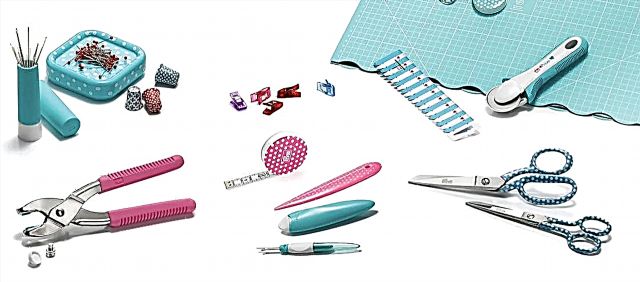Grinding the neck is the most popular way, but how can you prevent it from turning out during operation? I offer my simple trick)
 The whole secret lies in a special shaperepeating the upper part of the parts of the shelf and back along with the shoulder sections and part of the armhole. To do this, a new form of stitching is drawn on the pattern (specifically in this dress, the neck and backs, and the shelves, from which they were already “dancing”, were first deepened):
The whole secret lies in a special shaperepeating the upper part of the parts of the shelf and back along with the shoulder sections and part of the armhole. To do this, a new form of stitching is drawn on the pattern (specifically in this dress, the neck and backs, and the shelves, from which they were already “dancing”, were first deepened):
 The neck processing is performed separately on the shelf and back BEFORE joining the shoulder seams. On average, the back seam should already have a zipper stitched in:
The neck processing is performed separately on the shelf and back BEFORE joining the shoulder seams. On average, the back seam should already have a zipper stitched in:
Further processing is similar to processing by conventional grinding (paragraphs 1-6): 1. Prepare the grind shelves and backs, having duplicated them with non-woven fabric and having swept the lower cut on the overlock (I can see how to do this in my MK "Finishing the throat"):
 2. Pin the stitches to the shelf and the details of the back, while undoing the zipper and deploying an allowance for the middle seam of the back:
2. Pin the stitches to the shelf and the details of the back, while undoing the zipper and deploying an allowance for the middle seam of the back:
 3. Pave machine line for marking or for the width of the foot, if not sure, pre-schedule:
3. Pave machine line for marking or for the width of the foot, if not sure, pre-schedule:
 4. Dissect seam allowance every 1.5−2cm at an angle of 45 degrees, not reaching the line 1−2mm:
4. Dissect seam allowance every 1.5−2cm at an angle of 45 degrees, not reaching the line 1−2mm: 5. Grind up on the seam allowance, laying the line "to the edge" on the front side of the facing:
5. Grind up on the seam allowance, laying the line "to the edge" on the front side of the facing:


 6. Unscrew trim on the wrong side, sweep the seam with oblique stitches:
6. Unscrew trim on the wrong side, sweep the seam with oblique stitches:

 7. Can now start connecting shoulder seams, for this, again bending the stitches, chop off the shoulder seams of the product and the stitches, combining the seams of the stitching of the stitches, lay a line:
7. Can now start connecting shoulder seams, for this, again bending the stitches, chop off the shoulder seams of the product and the stitches, combining the seams of the stitching of the stitches, lay a line:
 8. To expand a seam on the sleeve block and iron:
8. To expand a seam on the sleeve block and iron:

 9. Undo the trim on the wrong side of the product and iron:
9. Undo the trim on the wrong side of the product and iron:
 10. Bend the grind above the middle seam of the back up and wrap the allowance of the middle seam of the back along with the inside-out turning:
10. Bend the grind above the middle seam of the back up and wrap the allowance of the middle seam of the back along with the inside-out turning: Then bend down again andiron:
Then bend down again andiron:

 Subsequently, in the zipper area, the stitching is sewn manually with hidden stitches to the zipper braid. 11. Everything would seem! BUT!!! For stability, I additionally fix the shoulder seams products with shoulder seams with additional stitching from the inside. To do this, I again bend the grind in the area of the shoulder seam and, as it were, wrap the shoulder seam with a grinder and draw an additional fixing line for the seam allowance next to the shoulder seam:
Subsequently, in the zipper area, the stitching is sewn manually with hidden stitches to the zipper braid. 11. Everything would seem! BUT!!! For stability, I additionally fix the shoulder seams products with shoulder seams with additional stitching from the inside. To do this, I again bend the grind in the area of the shoulder seam and, as it were, wrap the shoulder seam with a grinder and draw an additional fixing line for the seam allowance next to the shoulder seam:


 12. Left stitch sleeves as usual, having previously swept the parts of the product and the hem together along the cut of the armhole (unfortunately, I didn’t take a photo), thereby securing the lateral cut of the hem in the future seam of the sleeve. So the grinding is fixed and no longer turns out:
12. Left stitch sleeves as usual, having previously swept the parts of the product and the hem together along the cut of the armhole (unfortunately, I didn’t take a photo), thereby securing the lateral cut of the hem in the future seam of the sleeve. So the grinding is fixed and no longer turns out:







